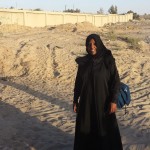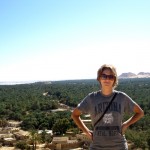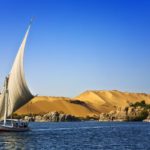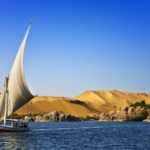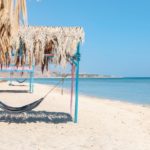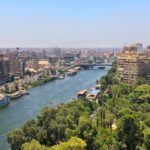Turning the Camera on Hostages, Sex Slaves, and Migrants: A Conversation with Filmmaker Keren Shayo
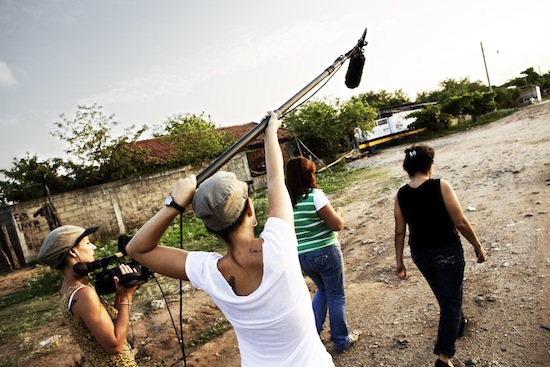
I first met independent filmmaker Keren Shayo at a Tel Aviv screening of Sound of Torture, a documentary about Eritrean hostages in the Sinai Desert. Keren spoke on a panel after the screening, and I was amazed that someone so slight, soft spoken and modest could have created such a bold film about this difficult and dangerous topic.
But creating films that highlight sensitive social and political issues throughout the world is what drives Keren’s work. Before Sound of Torture, Keren filmed the award-winning film, Maria en Tierra de Nadie, which brought her to some of the most perilous areas of Mexico.
Rachel Sales: Can you tell me about some of your film projects that have taken you across the world?
Keren Shayo: Aside from filming in Israel, I did a film [Maria en Tierra de Nadie] about Central American women who were traveling from Central America to the United States. They were traveling illegally–mostly from El Salvador, Nicaragua and Guatemala, and I documented their journey to the United States. To get to the US, they had to jump on the tops of trains and travel that way through Mexico. It’s a very dangerous journey, and at least a few women were raped, kidnapped, or experienced another kind of violence.
Make sure that you do a lot of good research and know as much as possible about any risks that may exist. You need to think about whether you want to take those risks, and whether it’s worth it for you or not.
We followed five characters and only one arrived in the US in the end. One woman fell down from the train and lost her leg. She was from a poor area in Guatemala and had to return to her parents’ house in a worse situation, though her goal was to arrive in the US, get a job, and send money back to her family. We lost another woman along the way; we had planned to meet her at one of the train stations, but she never arrived. The one woman who did make it to the US was 50 years old and paid off a coyote [smuggler] at the border. She got a job and is now doing okay.
RS: Did you travel alongside the women? What was your journey like while doing this film?
KS: It was very dangerous in Mexico, so we only did part of the journey by train. Sometimes we bypassed some stations that we knew were especially dangerous and then met up with the women at the next station. Other times we traveled with them and took a risk. We did stop at the station on the border between Mexico and Guatemala. Many women are kidnapped in that town and are forced to work as sex slaves. We had access to one of these places and because the owner was out for a week, we got the chance to film a woman who was kidnapped there. She and her daughter had been there for a few years.
RS: How big was your crew for this film?
KS: I was only traveling with one other woman. We couldn’t have a big crew because we were dealing with a very sensitive issue.
RS: What kind of precautions did you take as two women traveling in this dangerous environment?
KS: Before we started filming, we did pretty good research so that we knew about all of the stations along the way. We knew ahead of time whether it was a place we could stay for a while or not. If we felt like we were in any danger, we just moved on.
This specific migration is very well documented, so we were able to read a lot about it. On the other hand, for Sound of Torture, I was dealing with a completely unreported subject.
RS: How did you decide to work on Sound of Torture? What kind of travels were involved with that film?
KS: After I returned from Mexico, I started working on it. It was 2009, right at the beginning of the hostage phenomenon in the Sinai, when the ransom was $3,000 to $5,000. From the Central American migration I had just witnessed, I knew that this could grow to be a big phenomenon. In the beginning, I thought I would focus on the journey from Africa to Israel, and go to Sudan or Eritrea, but then the torture camps became a big phenomenon so I decided to focus on them.
For Sound of Torture, I needed to get material from Egypt, but the Sinai Desert became such an inaccessible area, and it was almost impossible to go there, especially with an Israeli passport. So we sent a foreign team to follow Meron [the main character in the film] while she was traveling in the Sinai. The only time I went to Egypt was to do research just before the revolution in 2011.
I never told anyone where I was going or what I was interested in, and I watched to make sure that no one was following me. I pretended to be a regular tourist.
RS: Were you concerned about traveling to Egypt?
KS: I was not so concerned about traveling to Egypt back then–they were better times. As an Israeli, I had to be careful especially because my research topic centered around refugees. I was very, very careful. I never told anyone where I was going or what I was interested in, and I watched to make sure that no one was following me. I pretended to be a regular tourist.
I had a lot of African contacts from Israel, and they had a lot of family members in Egypt and gave me their contacts. They all lived in the same neighborhood in Cairo–similar to that in Israel, but with worse conditions–so, every time I met someone, he’d introduce me to someone else.
I was by myself, but I kept in touch with my friends and family in Israel, and was always near my mobile phone. I knew that I would be fine because I wasn’t doing anything wrong, and it wasn’t such a dangerous place back then.
RS: How have you dealt with language barriers in your work abroad?
KS: I speak Spanish because I lived in Spain for a while, so in Mexico, I was fine. I also speak a bit of Arabic from working on projects with Palestinians, so I can understand it. I also always try to find someone in the community who speaks some English, and when I do, I ask him to be a contact person for me. I also work with translators, especially for Tigrinya [the language that many Eritreans speak].
RS: How have you dealt with experiencing fear during your travels?
KS: I always feel a sense of excitement in the beginning, and I don’t take big risks. If I know a place is too dangerous, I’ll ask people who are familiar with the place to come with me, or I won’t go there at all.
RS: What advice would you give other women who want to travel to dangerous regions for film projects?
KS: I think it’s very important that you gain trust from the locals. It’s very helpful to find people who speak English or the native language–they can be your contact people or your guides. Then just make sure that you do a lot of good research and know as much as possible about any risks that may exist. You need to think about whether you want to take those risks, and whether it’s worth it for you or not.

